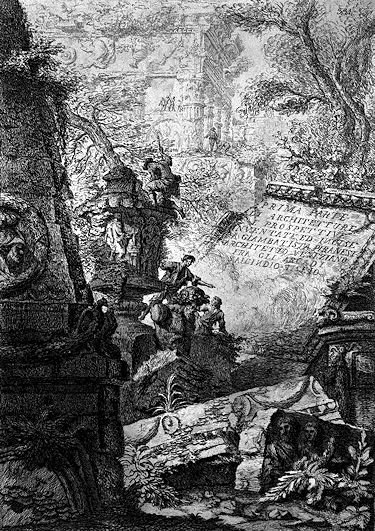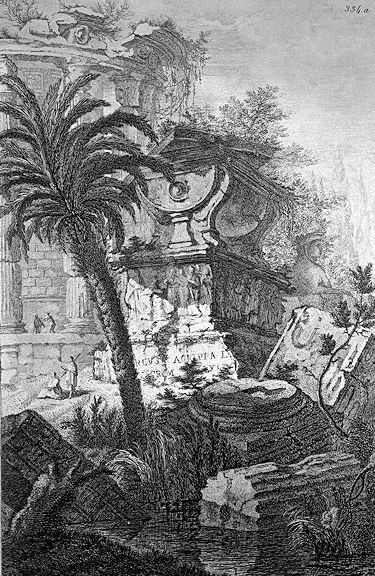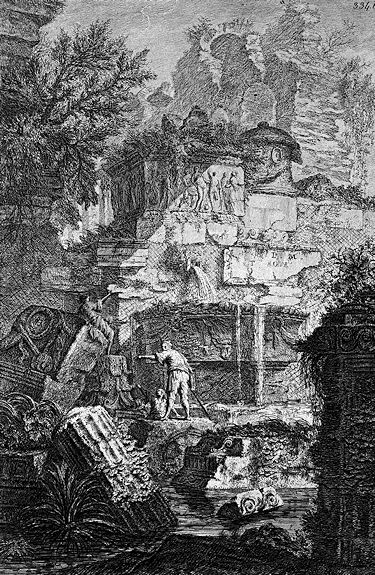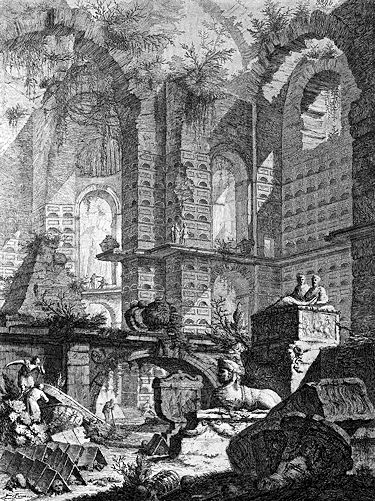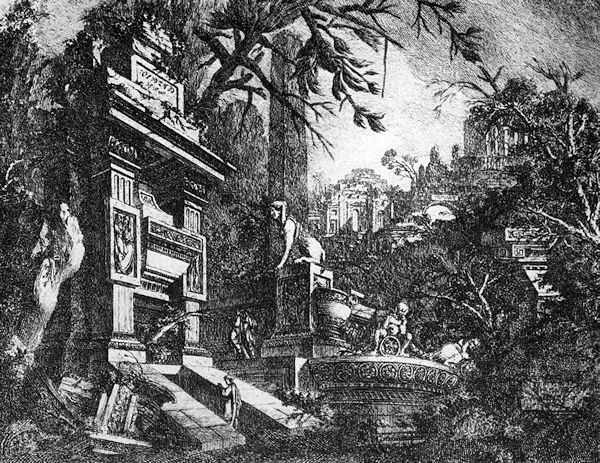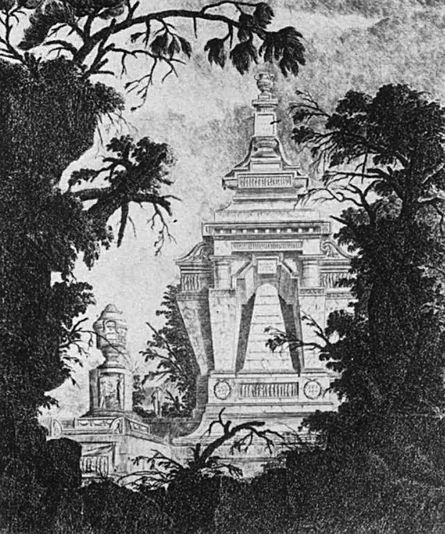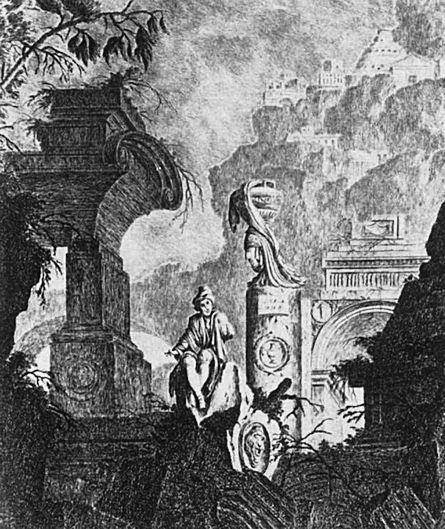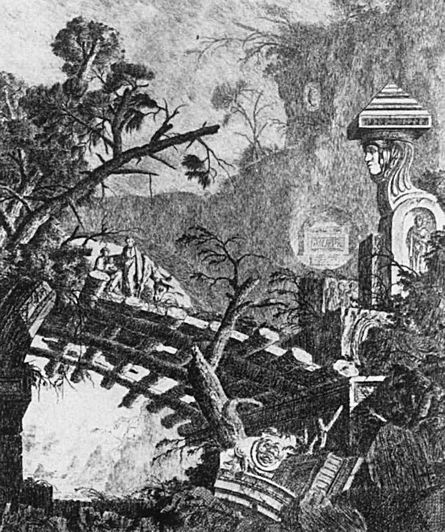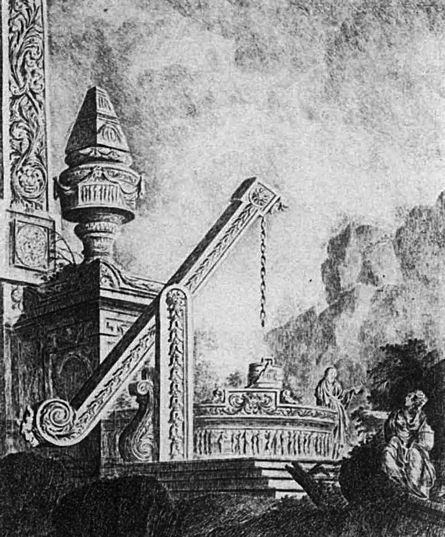piranesi |
1955 |
246. Emil Kaufmann, Three Revolutionary Architects--Boullée, Ledoux and Lequeu, Transactions of the American Philosophical Society, vol. 42 (1952), figs. 8-12, illustrates etchings by Le Geay. | In addition to architectural inventions, which according to Albert Giesecke were the fruits of studies in perspective in Piranesi's Venetian days, there are in the Prima parte a few etchings thoroughly different in subject matter and graphic treatment. Instead of stately buildings, they represent dilapidated structures; instead of sumptuousness there is picturesqueness; instead of clarity and precision a bold and free technique is applied. These new qualities reappear with still greater intensity in the Groteschi, or Capricci, which Giesecke with good reasons dates about 1745. No one who compares the two classes of etchings can fail to remark that within a short time the artist had undergone a deep change. Giesecke says that he has no explanation for this. The influence of Giambattista Tiepolo can hardly have been the reason, for Piranesi must already have known Tiepolo's designs when he worked on the etchings of the Mausoleo type. Nor was the sudden transformation of Piranesi's style brought about by the sight of the ruins of Rome, as one might suppose. I believe Jean-Laurent Le Geay's influence was responsible for Piranesi's new manner.246 This winner of the French Grand Prix of 1732 had come to Rome in 1738, two years ahead of Piranesi, who had many contacts with the colony of French artists. It is most probable that Piranesi became acquainted with the works and ideas of Le Geay, who in his young years had won a great reputation. Piranesi appears to have adopted Le Geay's manner, but did not imitate him slavishly. He soon created highly original works, surpassing, perhaps, those of the older architect who, as we shall see, became an extremely influential teacher in Paris in later years. |
|
|
|
|
|
|
|
|
|
|
|
|
|
|
|
|
www.quondam.com/53/5355d.htm | Quondam © 2021.08.16 |
